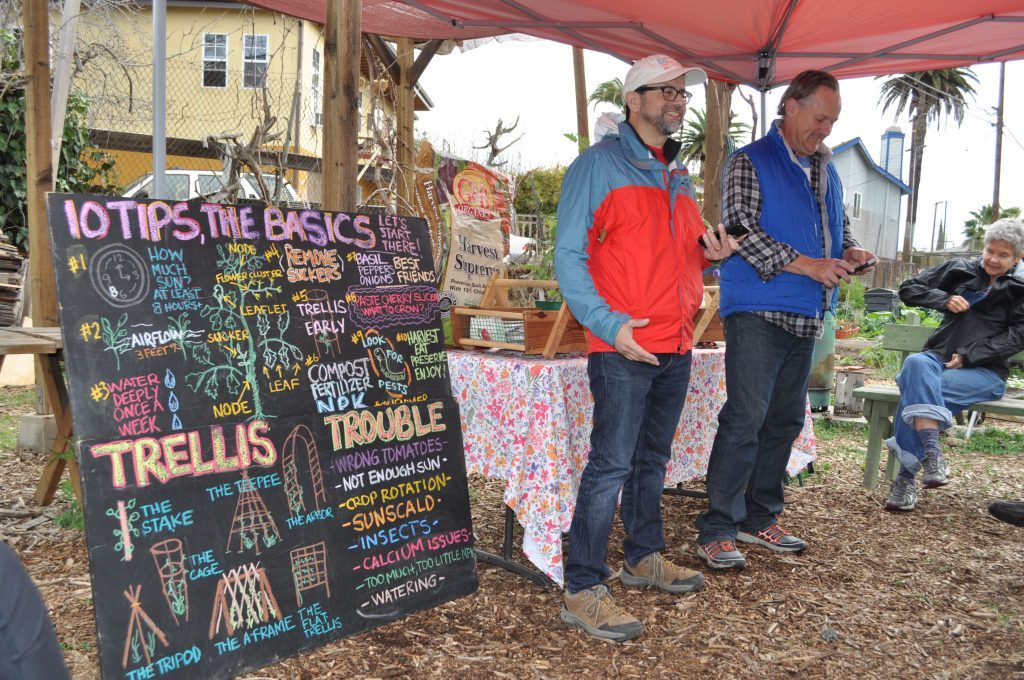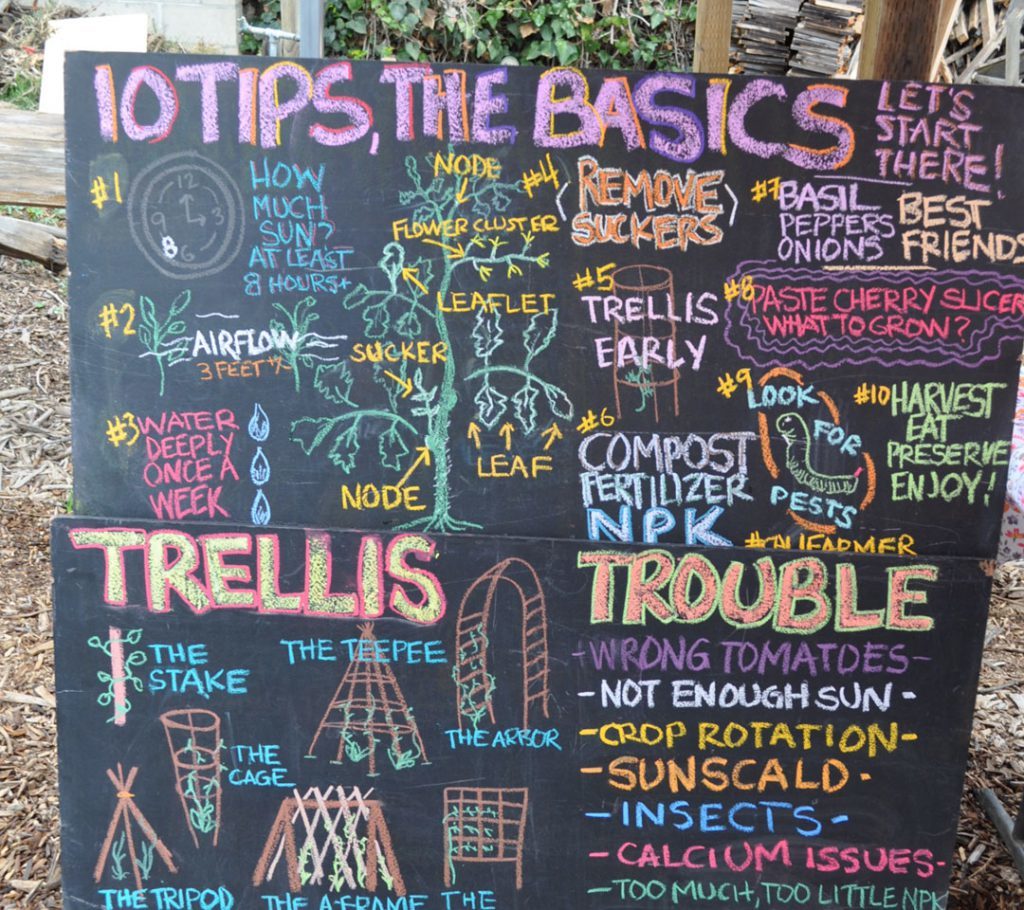LBO Workshop: 10 Tips for Tomatoes
When summer comes, you don’t want to be the one with scraggly tomato plants that aren’t bearing fruit. You want to be the one with a bumper crop of tomatoes for salads, salsas, sandwiches–and sharing with friends.
 At the Zaferia Junction Garden on Saturday, Long Beach Organic brought in Andy Vaughan, an urban gardener, school garden educator, and master gardener, who shared his tips on avoiding Tomato Trouble with more than a dozen gardeners.
At the Zaferia Junction Garden on Saturday, Long Beach Organic brought in Andy Vaughan, an urban gardener, school garden educator, and master gardener, who shared his tips on avoiding Tomato Trouble with more than a dozen gardeners.
The usual planting time for tomatoes is early spring. Tomatoes prefer a range of 55-77 degrees, so if nighttime temperatures are in the high 40s, it may be too early. With at least 70 days until maturity, tomatoes planted in late March will be yielding fruit in time for that Fourth of July salsa or salad.
“When is the right time?” said Vaughan. “I suppose when you’re ready.”
There are hundreds of varieties of tomatoes. Vaughan said varieties that take 80-90 days to mature do better inland than at the coast. Better for this area are plants that take around 70 days to mature.
It’s also good practice to plant established varieties such as Better Boy, Celebrity, Champion, and Early Girl, in addition to heirlooms, which often have reduced yields. It’s also fun to mix in cherry tomatoes. And if you’re looking for tomatoes for pizza toppings or cooking, paste varieties, which are thicker skinned and richer tasting, are a good choice.
 Before you plant, it’s a good idea to improve the soil with compost and amendment, and consider companion plants with similar water requirements, such as basil and peppers. Marigolds are useful for repelling pests. And flowers such as cosmos and zinnia can attract pollinators.
Before you plant, it’s a good idea to improve the soil with compost and amendment, and consider companion plants with similar water requirements, such as basil and peppers. Marigolds are useful for repelling pests. And flowers such as cosmos and zinnia can attract pollinators.
If you plant tomatoes–which like deep, less frequent soakings–near water-hogging crops like cucumber and zucchini, Vaughan said they’ll be “fighting like two Chihuahuas.”
When considering how far apart to place seedlings (or seeds), the “meter spread,” widening your feet about 2-3 feet, is a useful guide. Another tip for planting: remove the lower foliage, and plant your seedling deep to encourage root growth.
“Mind your space and mind your sun,” said Vaughan.
Install your trellis when you first plant the tomatoes. If you wait too long, training the vines around a trellis can be difficult–and result in breakage. Trellises can range from stakes, tripods, and teepees to cages, A-frames, arbors, and flat trellises. They can be elaborate or constructed simply with stakes, biodegradable string, and wire fencing.
Fertilize your plants with coffee grounds, bone meal, or ground eggshells. After that, give your plants deep, weekly waterings–about the length of a song, says Vaughan. Never water overhead. Instead, water directly into the soil to keep leaves dry and prevent the spread of disease.
Most importantly, keep removing suckers so growth is concentrated in four or so main vines. Removing lower growth will also help prevent the spread of fungi or viruses.
“Pinching suckers is going to save you a lot of time,” he said. “Always pinch your suckers. If they start going crazy, you have a mess.”
Suckers can also be replanted, noted Vaughan. You can either put them in water and plant them when they develop roots, or stick them in the soil and douse them with water.
Tomatoes are an excellent choice for first-time gardeners, since they’re pretty hard to kill. “You can run them over with a car and they’ll keep growing,” said Vaughan.
Although there are myriad tricks for producing bumper crops and vanquishing pests, in the end, it’s pretty simple. “Just look at the plant,” said Vaughan, “and it will tell you what it needs.”
The workshop was one in an occasional series sponsored by Long Beach Organic at their community gardens. The classes are free, however donations to LBO are always appreciated. Andy Vaughan is an urban farmer, school garden educator, and Master Gardener UCCE. Follow him on Instagram at #CaliFarmer or visit his website at www.califarmer.com.
- Margo McCall